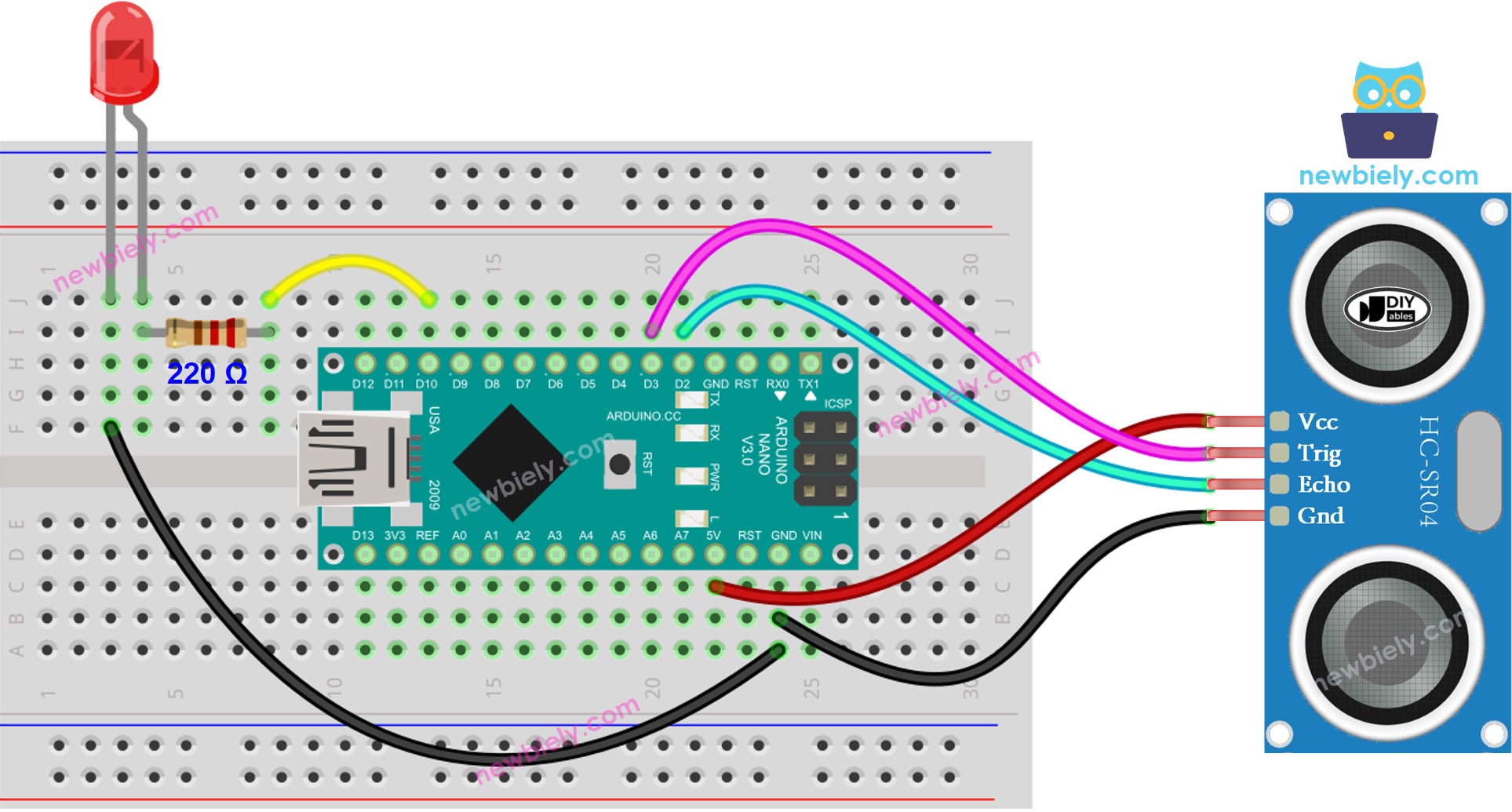Arduino Nano - Ultrasonic Sensor - LED
This tutorial instructs you how to use Arduino Nano and ultrasonic sensor to control LED. In detail:
- Arduino Nano turns on the LED if the object is near the ultrasonic sensor.
- Arduino Nano turns off the LED if the object is distant from the ultrasonic sensor.
Hardware Preparation
Or you can buy the following kits:
| 1 | × | DIYables Sensor Kit (30 sensors/displays) | |
| 1 | × | DIYables Sensor Kit (18 sensors/displays) |
Additionally, some of these links are for products from our own brand, DIYables .
Buy Note: Use the LED Module for easier wiring. It includes an integrated resistor.
Overview of LED and Ultrasonic Sensor
If you are unfamiliar with LED and ultrasonic sensor, including pinout, how they work, and how to program them, the following tutorials can help:
Wiring Diagram

This image is created using Fritzing. Click to enlarge image
See The best way to supply power to the Arduino Nano and other components.
Arduino Nano Code
Detailed Instructions
- Plug the USB cable into the Arduino Nano and PC.
- Launch the Arduino IDE and select the appropriate board and port.
- Copy the code and open it in the Arduino IDE.
- Click the Upload button on the Arduino IDE to compile and upload the code to the Arduino Nano.

- Move your hand in the vicinity of the sensor,
- Check out the alteration in the LED's state.
Code Explanation
Check out the line-by-line explanation contained in the comments of the source code!
※ NOTE THAT:
The code above is for educational purposes. The ultrasonic sensor is very sensitive to noise. If you want to use it in a practical setting, you should filter out the noise for the ultrasonic sensor. For more information on how to do this, please refer to how to filter noise for ultrasonic sensor.
